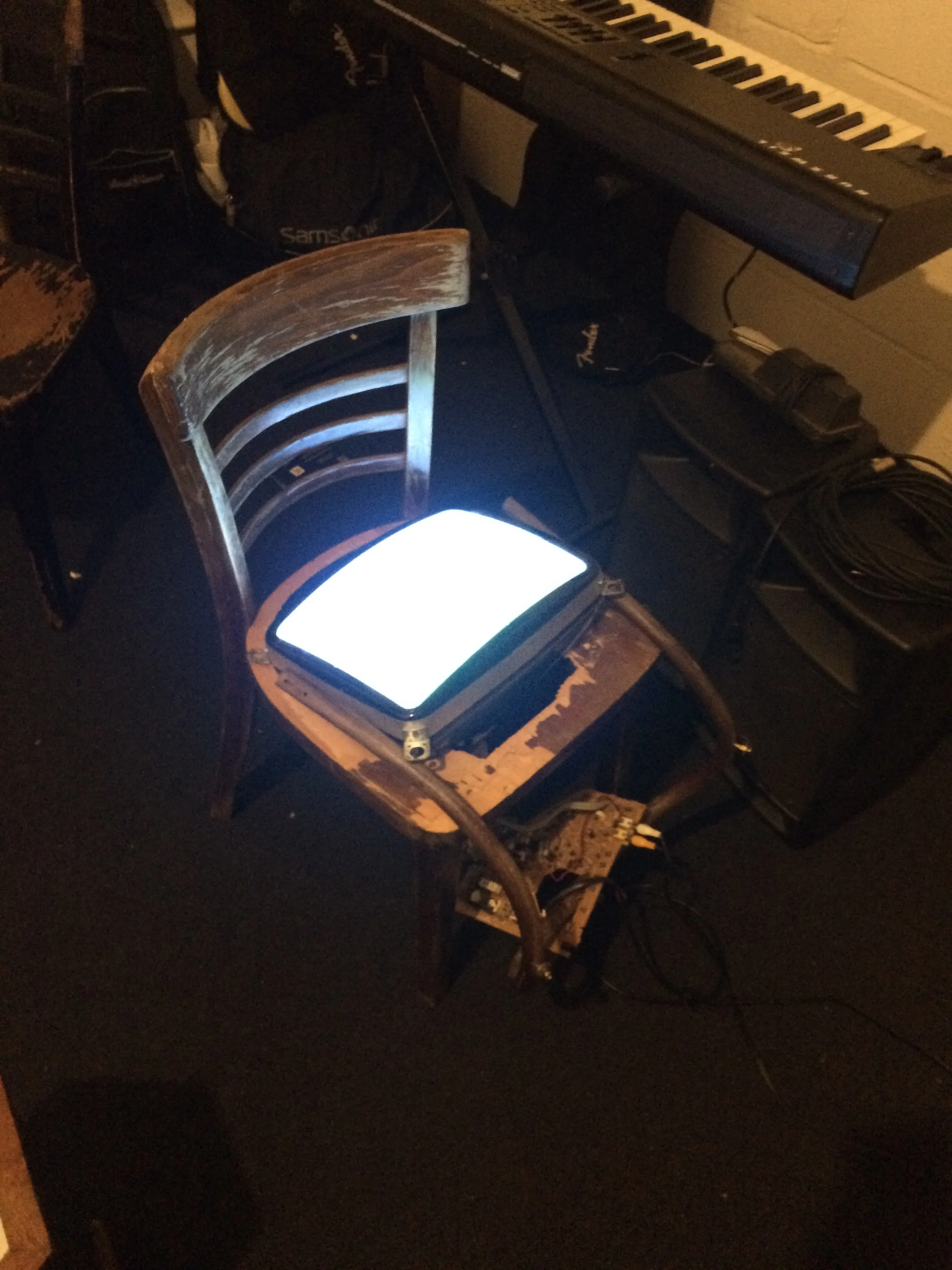
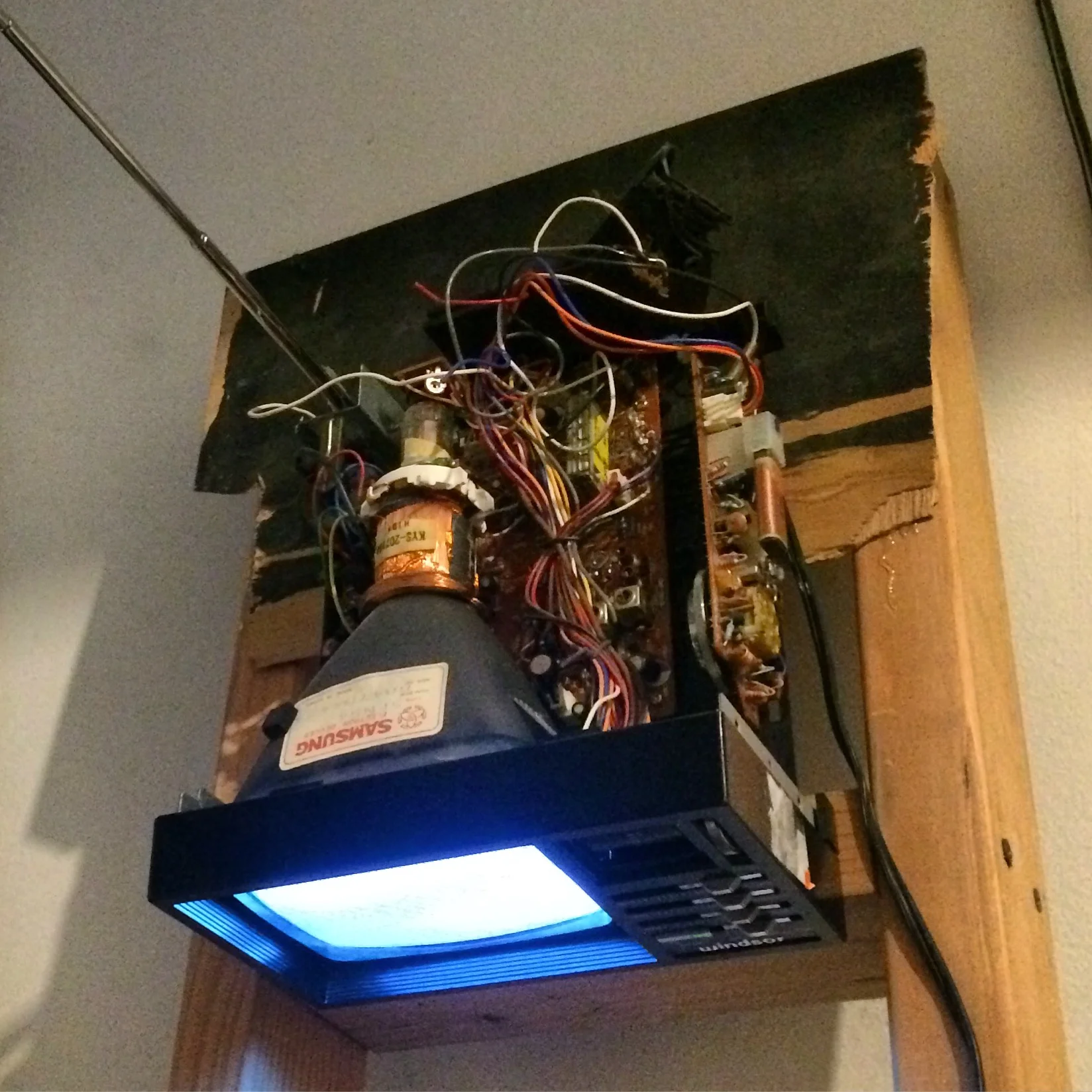
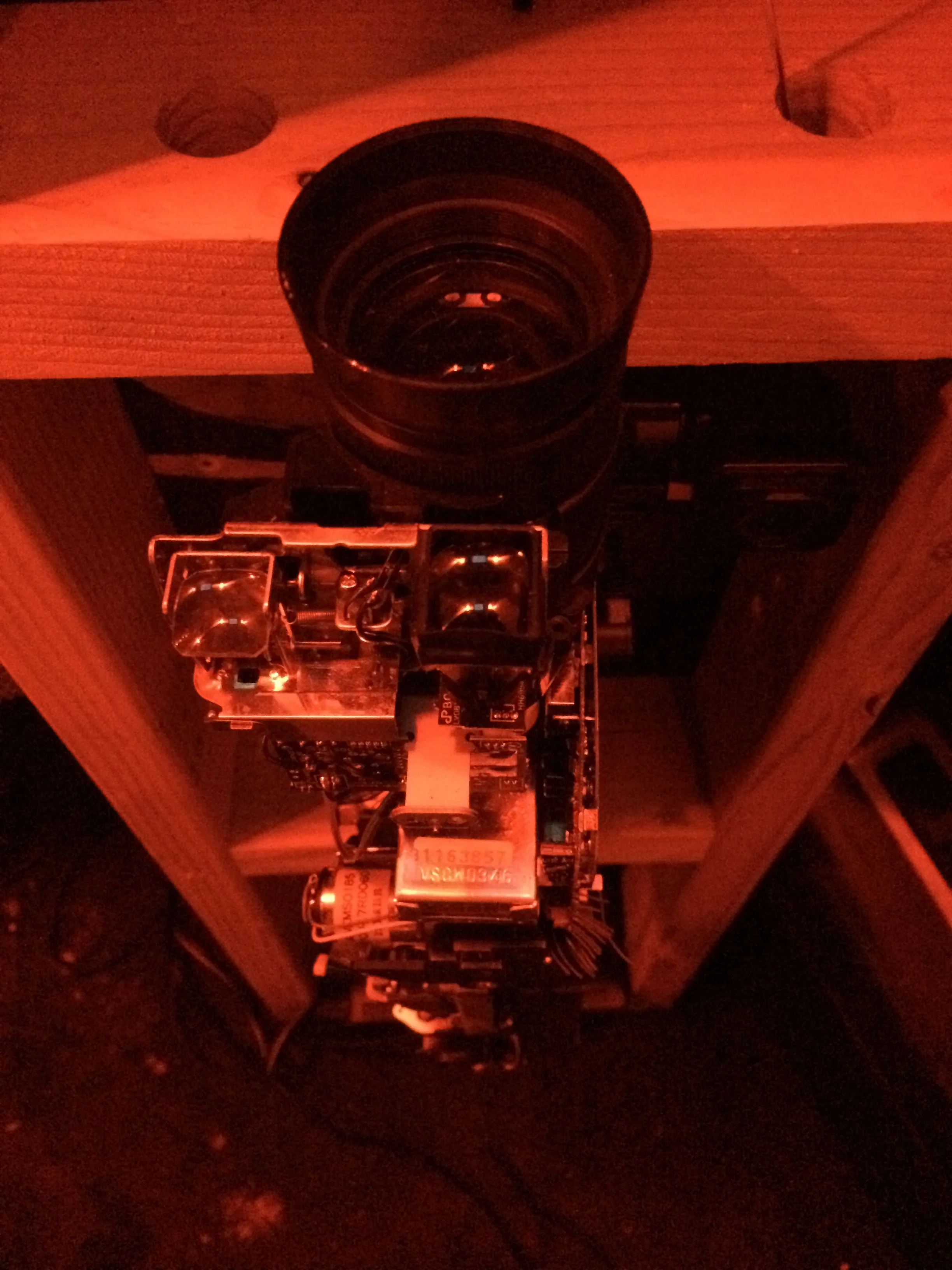
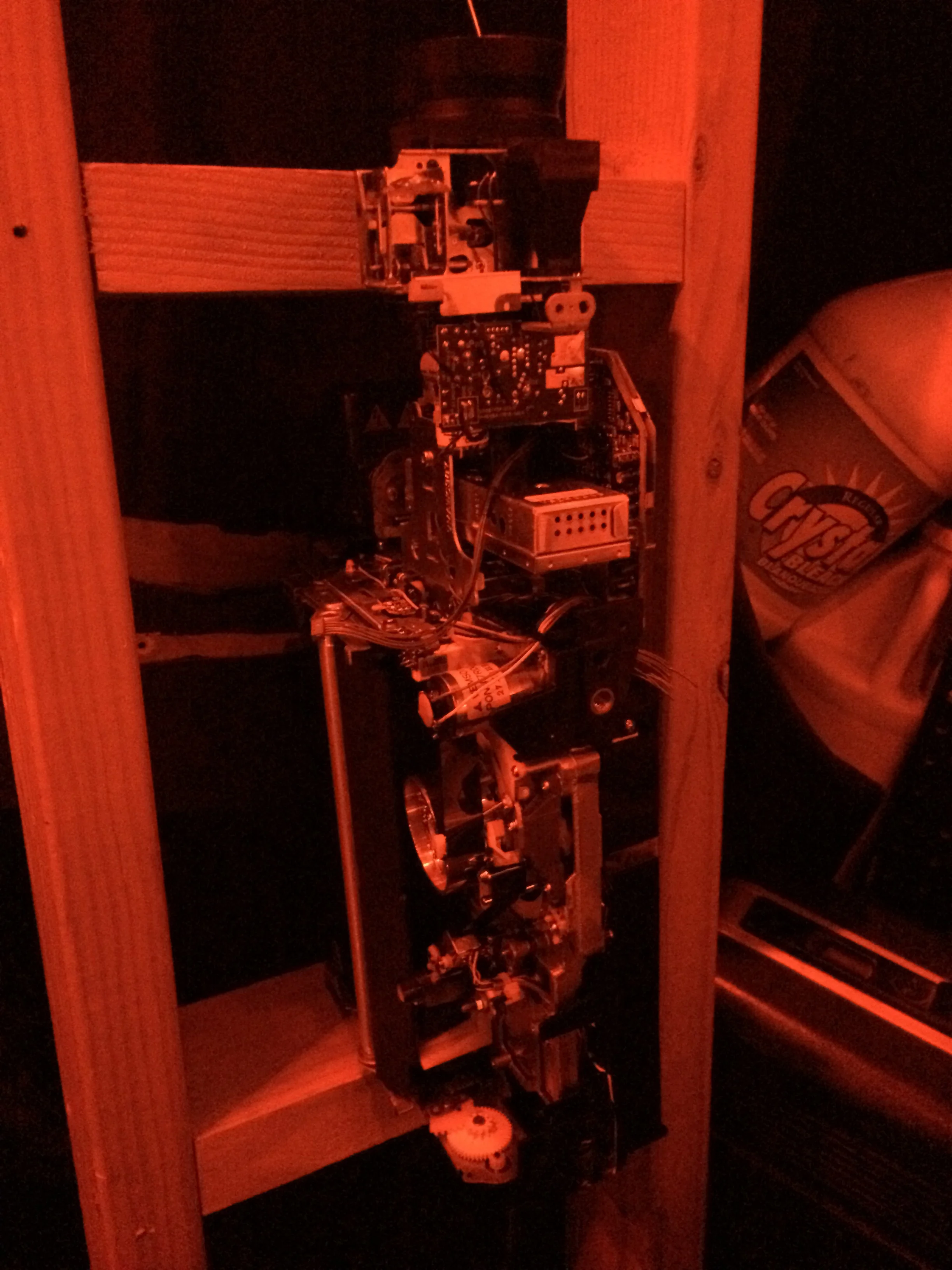
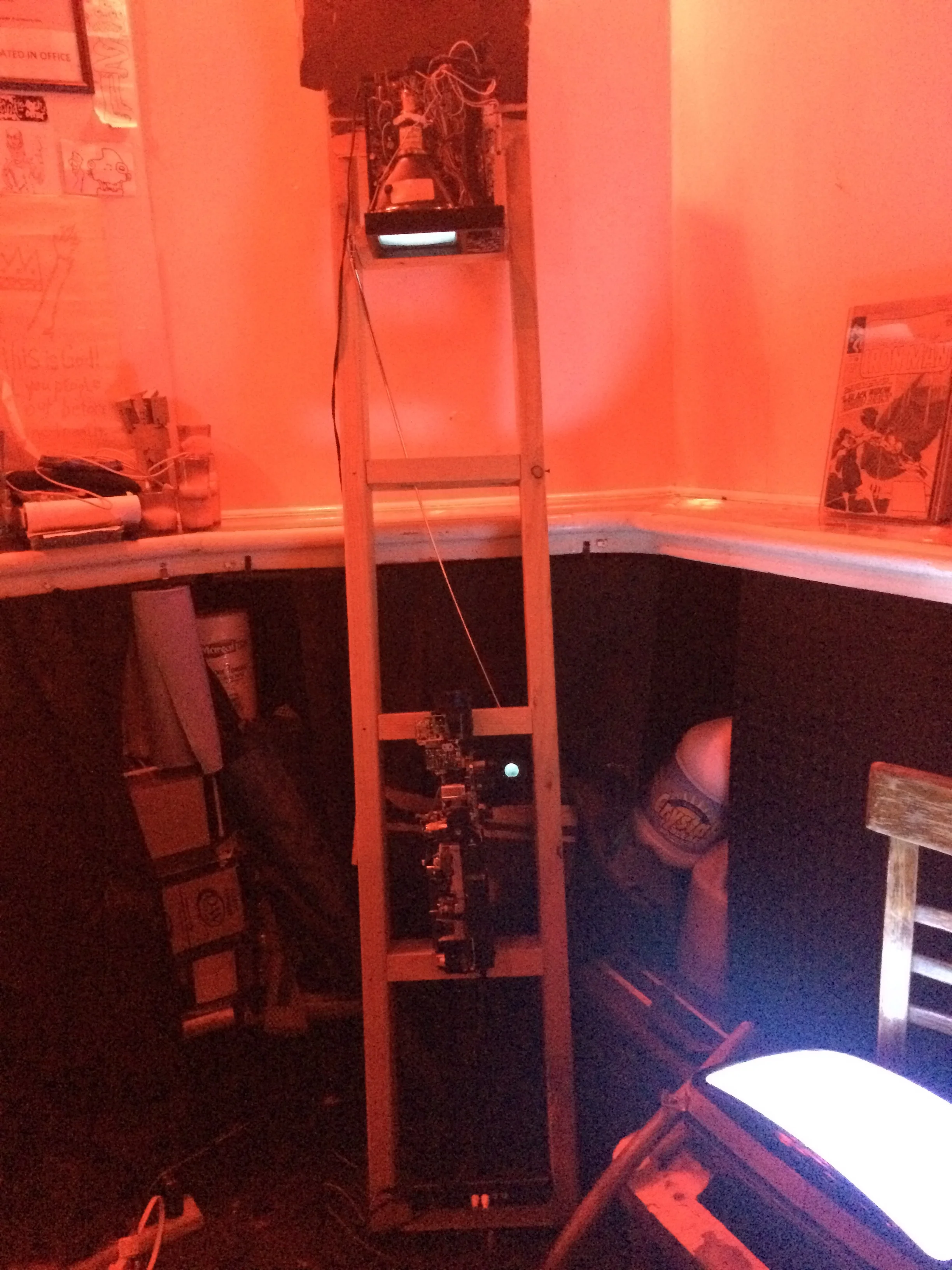
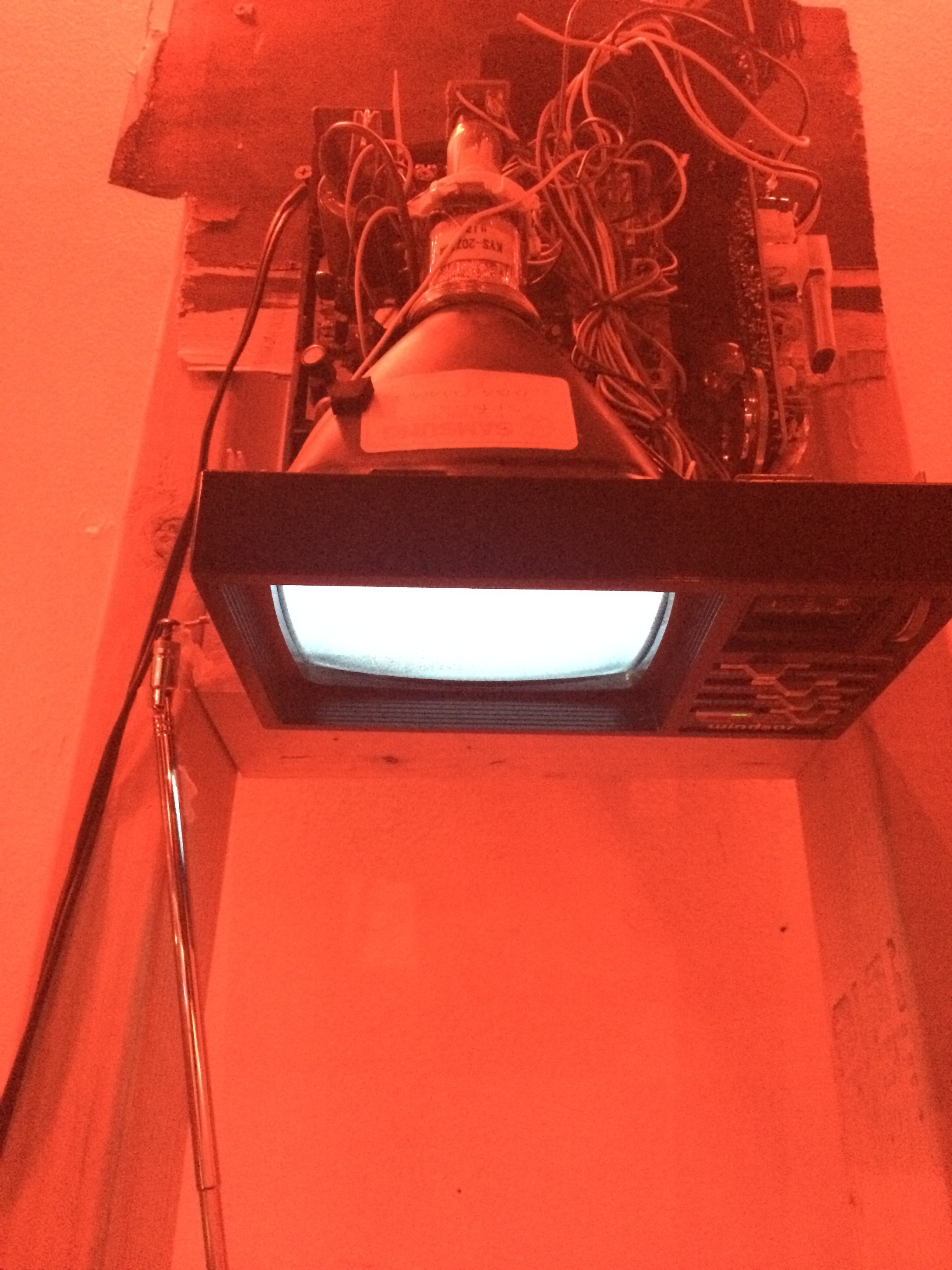
Your Custom Text Here
A sculptural work incorporating televisions and a video camera and furniture. A miniature television set is mounted on a wooden shelf approximately 71” in height. Its screen is pointed at the floor, its body is stripped of its outer casing exposing the wiring and cathode tube within. It is tuned to multiple static stations, which are alternated throughout the piece’s duration. Mounted two shelves below the mini-TV is a VHS camera, lens pointed directly at the screen of the TV. Like the mini-TV, the camera has been stripped of its casing. The camera feeds this image of the mini-TV’s static to a second full size television that has been stripped of its casing and embedded in the seat of a wooden chair.
All materials were found in second-hand shops and/or trash piles in and around Manhattan NY.
This is an elegy for the ghosts and phantom energies embedded in the island. The signals that the TV is searching for are no longer available since the systematic rise and dominance of cable/digital/online entertainment. The TV tries in vain to access these signals and has only its own inner machinations to report. The camera attempts to translate these images into something that will perhaps capture our attention. By feeding them to the makeshift piece of “televisual furniture”, the image is dulled into a pulse which reveals a hidden distortion that exists in the original static image. These televisual “translations” through pixelated distortion could be classified as phenomena of Nature; an example of a technology running to the edge of its own built-in parameters and bleeding out beyond them. The parameters of the TVs and the camera (both physical and philosophical) have been removed and/or repurposed in the piece in order to allow the natural elements of each to become dominant.
A sculptural work incorporating televisions and a video camera and furniture. A miniature television set is mounted on a wooden shelf approximately 71” in height. Its screen is pointed at the floor, its body is stripped of its outer casing exposing the wiring and cathode tube within. It is tuned to multiple static stations, which are alternated throughout the piece’s duration. Mounted two shelves below the mini-TV is a VHS camera, lens pointed directly at the screen of the TV. Like the mini-TV, the camera has been stripped of its casing. The camera feeds this image of the mini-TV’s static to a second full size television that has been stripped of its casing and embedded in the seat of a wooden chair.
All materials were found in second-hand shops and/or trash piles in and around Manhattan NY.
This is an elegy for the ghosts and phantom energies embedded in the island. The signals that the TV is searching for are no longer available since the systematic rise and dominance of cable/digital/online entertainment. The TV tries in vain to access these signals and has only its own inner machinations to report. The camera attempts to translate these images into something that will perhaps capture our attention. By feeding them to the makeshift piece of “televisual furniture”, the image is dulled into a pulse which reveals a hidden distortion that exists in the original static image. These televisual “translations” through pixelated distortion could be classified as phenomena of Nature; an example of a technology running to the edge of its own built-in parameters and bleeding out beyond them. The parameters of the TVs and the camera (both physical and philosophical) have been removed and/or repurposed in the piece in order to allow the natural elements of each to become dominant.